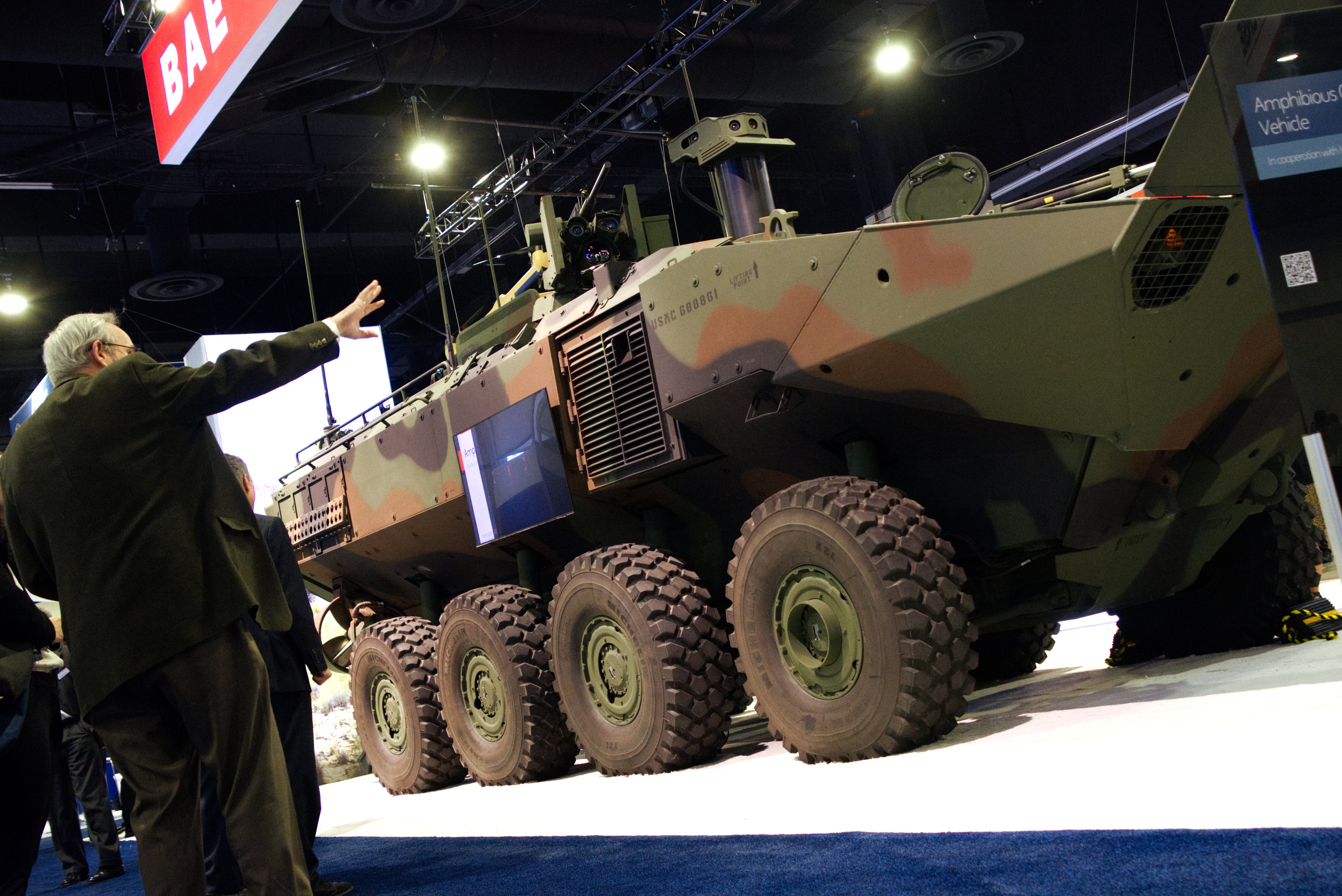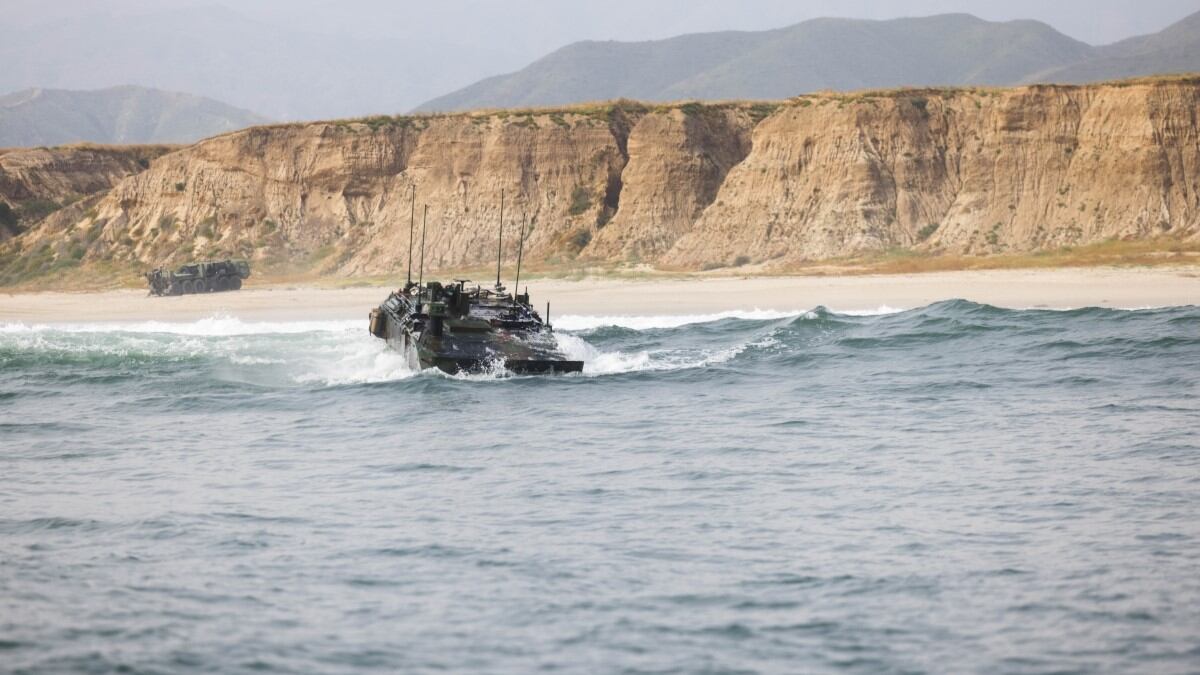WASHINGTON — Marines in Japan will receive the Corps’ new amphibious vehicles for the first time in the summer.
Twelve amphibious combat vehicles will arrive at the Okinawa, Japan-based 4th Marine Regiment in July, Col. Tim Hough, the Corps’ program manager for advanced amphibious assault, said on Wednesday at the Modern Day Marine conference in Washington.
“That’s important because now we’ll be in distinct geographical locations,” Hough said, adding that the Corps was ready to handle the challenges that would arise from having the amphibious combat vehicles spread out for the first time.
The update about the movement of vehicles to Japan was one of several the Corps and manufacturer BAE Systems unveiled at the Modern Day Marine conference.
RELATED

BAE Systems already has fielded 184 amphibious combat vehicles to the Marine Corps, but only to the 3rd Assault Amphibian Battalion and the Assault Amphibian School, both located at Camp Pendleton, California, according to Hough.
The amphibious combat vehicle allows Marines to travel from the Navy’s amphibious ships to shore and then roll onto land. It is replacing the amphibious assault vehicle, which had been in service since the 1970s.
After the amphibious combat vehicles were involved in multiple rollovers in 2022, in which no injuries were reported, the Marine Corps temporarily pulled them from operations in the surf zone. The service determined the mishaps happened because Marines hadn’t gotten sufficient training on how the amphibious combat vehicle differed from its predecessor vehicle, which has tracks rather than wheels, a flatter hull and a smaller size, among other design differences.
In 2023, the Marine Corps started recertifying vehicle operators and maintainers based on a new training curriculum.
The amphibious combat vehicle program is set to hit a few other milestones in the coming years.
The command-and-control-focused variant is scheduled to reach initial operating capability in fiscal year 2024′s third quarter, which ends July 1, according to Hough. The Corps expects the variant with a 30-mm cannon will reach initial operational capability in 2026, Hough said.
The assistant Marine commandant, Gen. Christopher Mahoney, said in January that amphibious combat vehicles would deploy with the 15th Marine Expeditionary Unit from California in the spring.
Outfitting vehicles with new tech
At the same Modern Day Marine trade show where Hough delivered his update, the company showed off the amphibious combat vehicle variant with the 30-mm cannon — this time equipped with an integrated combat system, which takes in information from sensors linked to other platforms and gathers it all on one interface.
The idea is to assemble information instantaneously through a network rather than relying on radio communication, said Garrett Lacaillade, vice president of amphibious vehicles at BAE Systems.
When BAE Systems demonstrated the system from within the vehicle on Monday, the sensors were filming from drones and other platforms at locations around the trade show. The sensor arrayed the live feeds of exhibitors’ booths and unsuspecting attendees on one screen, as in a Zoom call.
After BAE Systems’ Jesse Swangnete selected a target on the screen, the cannon moved to the appropriate angle.
Lacaillade said the Marine Corps seems “interested” in the system but has not yet issued any contract.
Junior Marines have tested out the system, though, and they have been able to figure out how to operate it with a few hours of training, according to Swangnete.
“They’ve grown up with the Xbox mentality,” he said.
Irene Loewenson is a staff reporter for Marine Corps Times. She joined Military Times as an editorial fellow in August 2022. She is a graduate of Williams College, where she was the editor-in-chief of the student newspaper.




